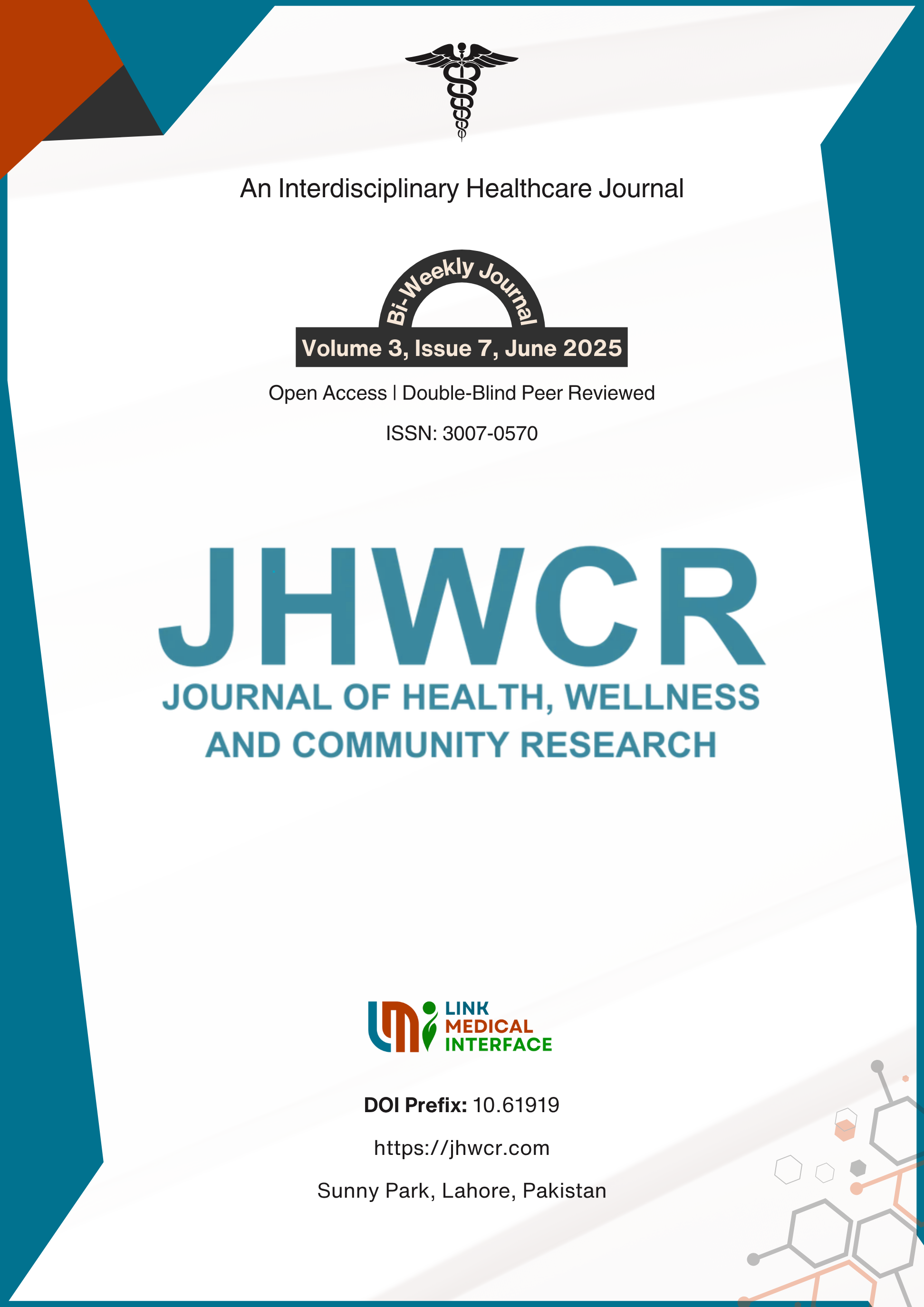Frequency and Factors of Respiratory Distress Among Neonates Admitted to Intensive Care Unit
DOI:
https://doi.org/10.61919/7ycrrf25Keywords:
Neonatal Respiratory Distress, NICU, Transient Tachypnea, Respiratory Distress Syndrome, Meconium Aspiration Syndrome, Perinatal Risk Factors, PakistanAbstract
Background: Respiratory distress is a leading cause of neonatal morbidity and mortality worldwide, particularly in resource-limited settings, yet local data on its frequency, etiological spectrum, and risk factors remain limited, hindering the development of targeted management strategies. Objective: This study aimed to determine the frequency and associated perinatal and maternal risk factors of respiratory distress among neonates admitted to a neonatal intensive care unit (NICU), focusing on key variables such as mode of delivery, gestational age, and clinical outcomes. Methods: In a cross-sectional observational study at Northwest General Hospital & Research Center, Peshawar, 151 neonates aged 1–28 days with clinical signs of respiratory distress were consecutively enrolled over six months. Neonates with congenital anomalies or postoperative respiratory distress were excluded. Data on demographics, perinatal history, and clinical outcomes were collected using standardized forms. Primary outcomes included frequency of specific etiologies and their association with perinatal risk factors, analyzed using chi-square tests and odds ratios with 95% confidence intervals in SPSS version 25. Ethical approval was obtained, and informed consent adhered to the Helsinki Declaration. Results: TTN (26.5%), RDS (22.5%), and MAS (18.5%) were the leading causes. TTN was significantly associated with cesarean delivery (OR 2.41, p=0.012) and term gestation (OR 0.29, p=0.008), RDS with preterm birth (OR 6.08, p<0.001), and MAS with meconium-stained amniotic fluid (OR 10.09, p<0.001). Conclusion: Respiratory distress in neonates is primarily driven by TTN, RDS, and MAS, with clear perinatal risk profiles; optimizing delivery practices and perinatal care can substantially improve neonatal outcomes in similar healthcare settings .
Downloads
Published
Issue
Section
License
Copyright (c) 2025 Journal of Health, Wellness and Community Research

This work is licensed under a Creative Commons Attribution 4.0 International License.


